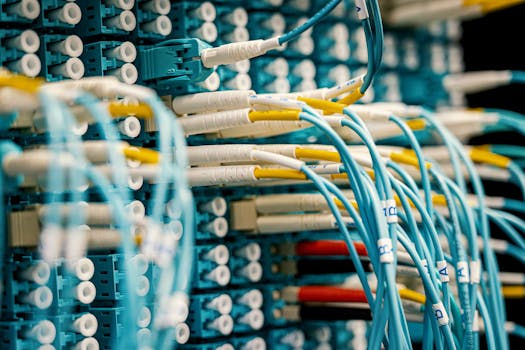
Revolutionizing Connectivity: The Future of High-Speed Data Transmission with Flexible Glass Fibers
Revolutionizing Connectivity: The Future of High-Speed Data Transmission with Flexible Glass Fibers has been a topic of interest in recent years, as the demand for faster and more reliable connectivity continues to grow. The advent of flexible glass fibers has paved the way for a new era in high-speed data transmission, enabling the development of innovative applications and services that were previously unimaginable.
The traditional copper-based infrastructure has been the backbone of telecommunications for decades, but it has several limitations, including signal degradation, interference, and bandwidth constraints. In contrast, flexible glass fibers offer a much higher bandwidth capacity, lower latency, and greater resistance to interference, making them an attractive solution for high-speed data transmission.
What are Flexible Glass Fibers?

Flexible glass fibers are a type of optical fiber that is made from a flexible glass material, which can be bent and twisted without breaking. This flexibility allows for easier installation and deployment, making it possible to use these fibers in a wide range of applications, from consumer electronics to industrial automation.
Flexible glass fibers have a core made of glass, which is surrounded by a cladding material that helps to confine the light signal within the core. The core and cladding are typically made of different types of glass, with the core having a higher refractive index than the cladding. This difference in refractive index allows the light signal to be confined within the core, enabling high-speed data transmission over long distances.
Advantages of Flexible Glass Fibers

Flexible glass fibers offer several advantages over traditional copper-based infrastructure, including higher bandwidth capacity, lower latency, and greater resistance to interference. They are also lighter, thinner, and more flexible, making them easier to install and deploy.
In addition to these technical advantages, flexible glass fibers also offer several economic benefits. They are less expensive to install and maintain than traditional copper-based infrastructure, and they can support a wide range of applications, from high-speed internet to industrial automation.
Applications of Flexible Glass Fibers

Flexible glass fibers have a wide range of applications, from consumer electronics to industrial automation. Some of the most significant applications include high-speed internet, data centers, cloud computing, and the Internet of Things (IoT).
In the consumer electronics sector, flexible glass fibers are used in a wide range of devices, including smartphones, tablets, and laptops. They enable high-speed data transmission, allowing users to stream video and audio content, browse the internet, and access cloud-based services.
In the industrial automation sector, flexible glass fibers are used to connect machines and devices, enabling real-time monitoring and control. They also enable the use of advanced technologies, such as artificial intelligence and machine learning, to optimize industrial processes and improve productivity.
In conclusion, Revolutionizing Connectivity: The Future of High-Speed Data Transmission with Flexible Glass Fibers is a topic of great interest and significance. Flexible glass fibers offer several advantages over traditional copper-based infrastructure, including higher bandwidth capacity, lower latency, and greater resistance to interference. They have a wide range of applications, from consumer electronics to industrial automation, and are expected to play a major role in shaping the future of high-speed data transmission.



